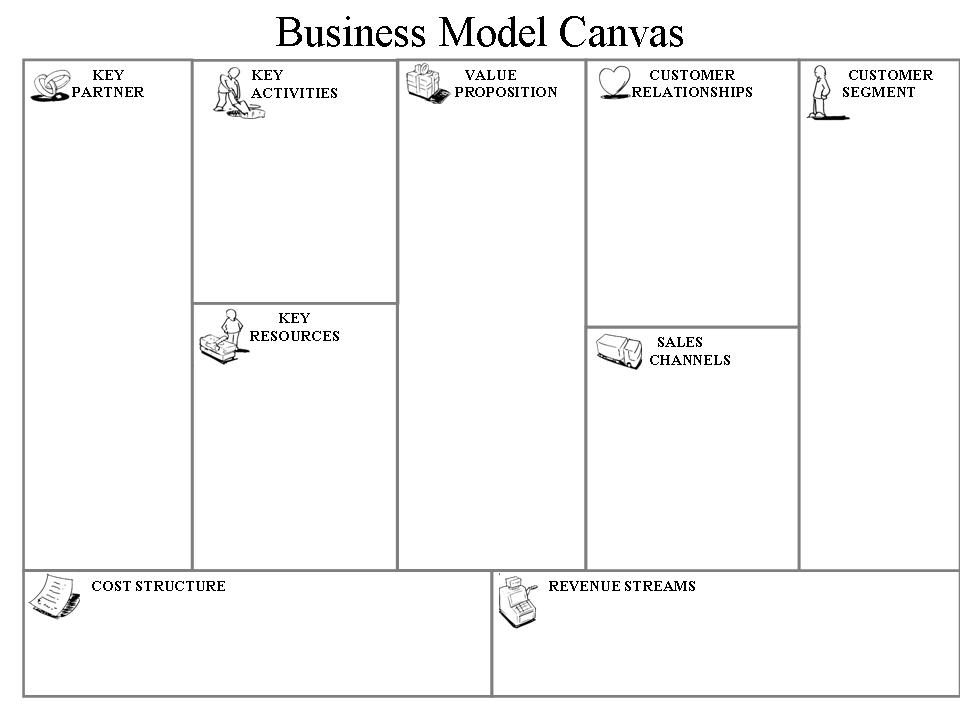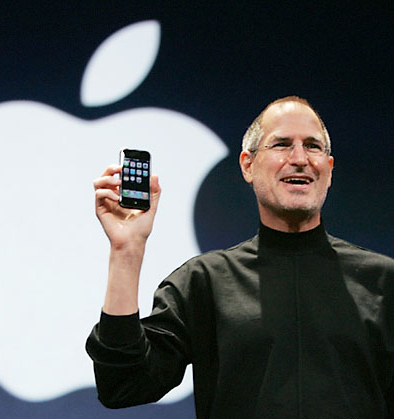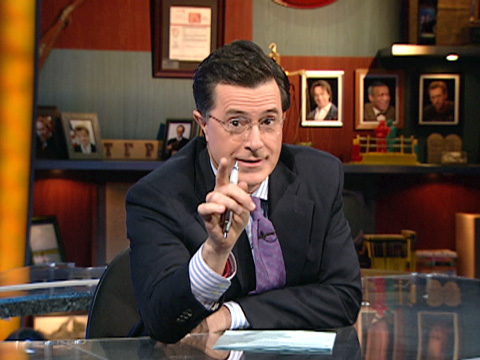Leadership Catalyst Blog
Stop Multitasking and Get More Done!
All Blog Posts, Motivation / 30.01.2013
 Busy executives often pride themselves with their ability to multi-task, believing they are getting far more done than if they were simply completing one task at a time. Last week there was an interesting article by Paula Bilitz in the Minneapolis Star Tribune (Click here) suggesting that Multitasking is just Switchtasking. In it she cites compelling Neurological evidence that the brain cannot effectively do two things at once. In fact, it is less efficient than doing one thing at a time, because switching costs result when people need to review what they have done before resuming work.
Busy executives often pride themselves with their ability to multi-task, believing they are getting far more done than if they were simply completing one task at a time. Last week there was an interesting article by Paula Bilitz in the Minneapolis Star Tribune (Click here) suggesting that Multitasking is just Switchtasking. In it she cites compelling Neurological evidence that the brain cannot effectively do two things at once. In fact, it is less efficient than doing one thing at a time, because switching costs result when people need to review what they have done before resuming work.
It is also just plain rude. As author Dave Crenshaw points out in his book The Myth of Multitasking: How Doing it All Gets Nothing Done, “Multitasking is a polite way of telling someone ‘I haven’t heard a word you’ve said.’”
One of the ground rules we use in our Vistage Executive Peer Advisory Meetings is something we call the “Airplane Rule”. During the meeting, all cell phones and email devices are switched off. We allow time for email and phone calls during breaks, but during the meeting time we want everybody to be fully present and engaged. I find our meetings are incredibly more productive than ones I frequently experienced in the corporate world. Try turning off your phone at your next meeting.
Read More >>
Focusing on Core Values Helps Vistage Member Win 2013 Specialty Retailer of the Year Award
All Blog Posts, Vistage Peer Groups / 21.01.2013
Last week I attended the 2013 Twin Cities Business award banquet for the most successful small businesses in Minnesota. I was honored to have been invited as a trusted advisor by one of the honorees, Bob Hartzell, of Chuck and Don’s Pet Food Outlet. Bob is a Charter member of one of my Vistage CEO Peer Advisory Groups, and I am proud to have him in our group. It was fun to hear how they had leveraged an initial $250 investment in one store 22 years ago, into a thriving and fast growing chain of 24 stores in Minnesota and Colorado. (Click here to read their brief success story.)
But it was even more gratifying to hear Bob’s partner, Chuck Anderson, attribute much of their success to having clearly articulated core values to guide their decisions and mold their culture. Everyone talks about values, but few know how to use them to run their business. This is something my Vistage members have focused on, and Chuck presented several examples in his acceptance speech of how it has helped fuel their success.
The three core values he highlighted were a “passion for pets,” “customers first,” and “commitment to community.” These are not just words on a website or a banner — they are core values around which they make business and hiring decisions. Here is how.
- Passion for Pets – Everyone who works at Chuck and Don’s loves animals, and over 90% of them have pets of their own. Their business cards have pictures of their own pets on them. Customers are encouraged to bring their pets into the stores and their employees know many of them by name. I have heard customers say that employees know their pets better than they do, and that they are incredibly helpful not only in helping them buy the right products, but also in solving their pets’ training or behavioral issues.
- Customers First – Employees are encouraged to spend as much time with each customer as needed to help find solutions to their problems. They log customer purchases at the cash register so that they can help other family members of the customer pick out the type of food their pet typically eats. Employees even carry out heavy bags of dog food to the car for their customers. Chuck and Don’s has a remarkable customer loyalty program that rewards their best customers with the greatest savings.
- Commitment to Community – Chuck and Don’s is an active sponsor of service dog and rescue organizations, donating over $150,000 per year. Their policy to encourage pet adoption and not sell pets in their stores is another example of their commitment to the rescue community. They also look for store locations in areas that have a strong sense of community, and I have seen them pass on high traffic locations that they felt lacked a community connection.
Congratulations Bob, on being selected as one of the most successful small businesses in Minnesota and thank you for providing such a great example of how use core values to align your organization and grow your business.
Read More >>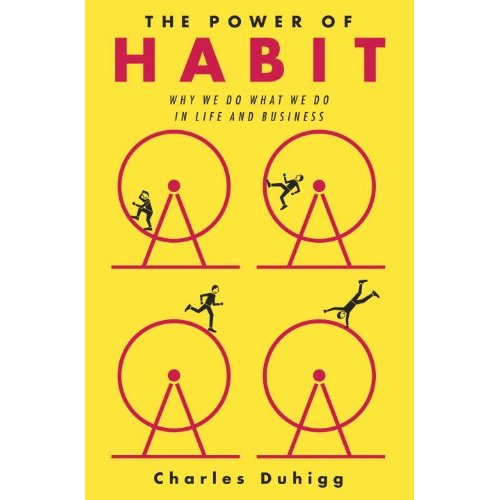 Our successes and failures seem to be grounded in habits we were lucky enough to make or are too weak to break. Just what are habits, how do they work, and how can we break bad ones and make good ones? Many of the CEOs in my Vistage Peer Advisory Groups are trying to improve their health by changing their habits. As it turns out, the secret to changing habits has huge implications, not only in our personal lives, but in our businesses and in society at large.
Our successes and failures seem to be grounded in habits we were lucky enough to make or are too weak to break. Just what are habits, how do they work, and how can we break bad ones and make good ones? Many of the CEOs in my Vistage Peer Advisory Groups are trying to improve their health by changing their habits. As it turns out, the secret to changing habits has huge implications, not only in our personal lives, but in our businesses and in society at large.
For some answers, check out a wonderful new book, “The Power of Habit: Why We Do What We Do in Life and Business.” You can also check this CNN Video interview (5 min) with the author and Fareed Zakaria and some brief explanations by the author of what you’ll find in the book, including how the CEO of Alcoa turned the company around by changing the safety habits (no kidding) of its employees and how Target can tell which of their customers are pregnant. In another video, (3 min) the author explains the habit breaking technique in detail. If you are really interested in changing your habits, take 8 minutes to view both of these videos.
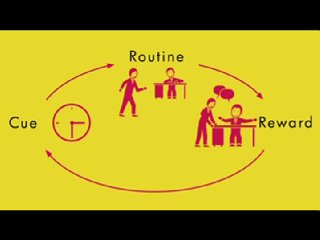 I’m about two thirds of the way through the book which looks at role habits play in individuals, companies and society as a whole. One of my favorite stories relates how a US Army officer analyzed the habit of crowds in an Iranian town and significantly reduced the number of riots there by removing the kebab vendors (again, no kidding). Stay tuned to see if his techniques are powerful enough to help me exercise every morning and stop snacking at night.
I’m about two thirds of the way through the book which looks at role habits play in individuals, companies and society as a whole. One of my favorite stories relates how a US Army officer analyzed the habit of crowds in an Iranian town and significantly reduced the number of riots there by removing the kebab vendors (again, no kidding). Stay tuned to see if his techniques are powerful enough to help me exercise every morning and stop snacking at night.
Ten Game Changing Tips for CEO Personal Productivity
All Blog Posts, Motivation, Vistage Peer Groups / 31.05.20121 comments
As members in my CEO peer groups have been getting a grip on their business through the implementation of “Traction”, a new challenge has emerged – How to make the best use of time that was previously spent in countless meetings and in constantly fighting fires. In other words, how do they more effectively use their found time to work “ON” their business rather than “IN” their business.
 Last week we had Steve McClatchy, CEO of Alleer, help us do just that. Most of us had been through various time management programs, and understood the “importance vs urgency” distinction when prioritizing tasks.
Last week we had Steve McClatchy, CEO of Alleer, help us do just that. Most of us had been through various time management programs, and understood the “importance vs urgency” distinction when prioritizing tasks.
However, all too often, urgency trumps importance, and deadlines tend to dictate how we spend our time. This keeps us in a reactive, rather than a proactive mode, which means most of our time is spent managing or maintaining our businesses, rather than leading and improving our businesses.
Here are 10 game changing tips from Steve McClatchy:
1. There are two major categories of tasks — Gain Tasks ( “A” priorities) and Prevent Pain Tasks (“B” & “C” priorities).
“Gain Tasks” produce the greatest results in terms of achieving your goals and improving your life or business. They are things you really want to do, they are motivating, and accomplishing them is energizing and creates the feeling of balance in your life. However, you don’t have to do them, you can’t delegate them, and they are never urgent. These should be your “A” priorities. The only person that can place an “A” on your task list is you. Everyone else’s “A”s are your “B”s and “C”s
“Prevent Pain” tasks are things we “have to” do, and are maintenance tasks which keep us where we are. They will eventually all become urgent, and can burn us out. Prevent Pain tasks are “B” priorities if their results are being recorded and “C” priorities if no one else will know if we completed them or not. Delegate “have to” tasks whenever possible.
2. Intersperse your “A” tasks with your “B” and “C” tasks throughout the day.
This will help you accomplish your “A”s, energize you to accomplish your “B” and “C” tasks, and will create the feeling of balance and movement toward your goals. If you do your Prevent Pain tasks first, you will never get to your Gain tasks and will experience burnout.
3. Schedule your “A” tasks on your calendar to assure they get done.

People make decisions on how to use their time, based on their calendar, not their task list! Getting your “Gain”tasks on your calendar dramatically increases the probability that you will complete them.
4. Have one location to record all of your tasks, appointments, contacts notes and emails.
Keep it with you always, on your smartphone, tablet or PC, and get rid of all floating pieces of paper. For each task or email, touch it only once and decide to :
— Do it now if it takes less than 2 minutes
— Do it later and schedule it on your calendar or to do list.
— Don’t do it ever.
— Delegate it
5. Create daily and future to do lists using tasks in outlook, lotus notes, etc. by entering the date the task is to be started and when it is due.
This is the key to delegation, goal achievement, and stress reduction. Don’t overwhelm yourself and kill your productivity with one giant to-do list. By using an outlook task list, you can parse your master to do list into 365 daily to do lists (one for every day of the year) by simply putting in a start and completion date. Don’t waste time looking at tasks you are not going to get to today. For more ideas, go to: http://www.alleer.com/Article-TMTip1.htm
6. Keep ONE calendar!
You can still keep communication calendars (like work and home), but everything on a communication calendar needs to be on your calendar. You will save yourself an unbelievable amount of time and aggravation if you and your spouse can access one another’s calendars through outlook, google or iCalendar. Make sure everything syncs through the cloud. If you have non-compatible devices (PC/Apple) and don’t have an exchange server, you can “rent” one over the cloud for about $6/month at sherweb.com.
7. Keep great notes!
For a low tech option, keep one spiral notebook that you log all notes chronologically by date.
 Tablet computers are ideal for this purpose. The main challenge is retrieval, so keep it simple and take notes where you can always quickly find them. For example, create an outlook contact for each of your employees, and keep a running journal on all of your conversations in the notes section of each contact. You can also record performance examples there, along with topics you want to cover the next time you talk. Do the same for all of your peers, boss, customers, and even your kids.
Tablet computers are ideal for this purpose. The main challenge is retrieval, so keep it simple and take notes where you can always quickly find them. For example, create an outlook contact for each of your employees, and keep a running journal on all of your conversations in the notes section of each contact. You can also record performance examples there, along with topics you want to cover the next time you talk. Do the same for all of your peers, boss, customers, and even your kids.
There are also applications like onenote, evernote, and notes that let you take notes by date, topic and contact. The advantage with these applications is that they sync with all of your devices so that they are always accessible.
8. Become a power user of Outlook, Lotus notes, or Apple apps.
Learn to drag emails into tasks, calendar and contacts so that you have that information when you need it — When you are working on it or when you are in a meeting. You can also drag tasks into your calendar so you can easily schedule them
Turn your standard emails and templates into “signatures”. You can have over 75 different signatures that contain full emails. The advantage is that when you need to send a standard email, you can click on “new” and then right click anywhere on the signature, which will generate a drop down box with all of your signatures. Click on the one you want, change the salutation and anything else you want to customize, and then hit send.
9. Implement email protocols and best practices.
Email, while a great tool, can be an incredible personal and organizational waste of time. When you calculate all of the time it takes to set up, address, write, and edit an email, most people are only communicating at 5 – 10 words per minute. Contrast this with texting, which is 10 – 20 words per minute, Instant messaging, which is 30 – 40 words per minute, and voice mail, which is 150 – 250 words per minute.
Huge amounts of time can also be saved by having people limit their distributions lists and by not hitting “reply all” on their responses.
Finally, make sure you are managing your email, and not letting it manage you. Turn off your email new item alert window and sound — You have enough interruptions. Check it a couple of times a day, and otherwise, stay focused on accomplishing your “Gain” tasks for the day.
10. Manage interruptions to stay productive and accomplish your “Gain” tasks.
The key, says McClatchy, is to limit the interruption to the 2 minutes of actual work required by the interruption, which usually falls into 3 categories: A task someone wants you to complete, an appointment they want you to schedule, or an exchange of information. For some great tips on how to do this directly and in a way that builds rather than hurts relationships, go to Managing Interruptions.
Read More >>In the 18-minute Ted Video below, Simon Sinek presents a compelling argument that great leaders inspire action in their followers by starting with the “Why” before talking about the “How” or “What”. He illustrates his points using the inspirational examples of Apple Computer, the Wright brothers, and Martin Luther King Jr.
If you haven’t already seen it, I recommend you take 30 minutes to watch the video and then draft a “Why” statement for both your company and yourself. It is well worth the time, and one of the better TED videos that I have seen. It could significantly change your approach in communicating to employees and customers.
[youtube=http://www.youtube.com/watch?v=qp0HIF3SfI4&w=640&h=360]
Sinek says that people don’t buy what you do, they buy why you do it. A key to success as a leader is attracting followers who share your beliefs. When inspiring others to follow you or buy your product, start with “Why”.
In our March Vistage meetings, we watched and discussed this video, and all members (including me) took a stab at drafting a why statement for their businesses, and for themselves.
Here is my take on the Vistage Why, How and What statements.
 Why: Vistage is dedicated to increasing the effectiveness and enhancing the lives of Chief Executives.
Why: Vistage is dedicated to increasing the effectiveness and enhancing the lives of Chief Executives.
How: We accomplish this by helping Chief Executives become better leaders, make better decisions, and get better results.
What: We build and sustain Executive Peer Advisory Groups of chief executives from non-competing business to deliver 4 pillars of value.
- Confidential “Advisory” Peer Group Meetings that meet monthly to address key issues impacting executive decision-making and corporations;
- Private 1-to-1 Mentoring/Coaching Sessions monthly between the Vistage Chair and member executive;
- Expert resources (e.g. speakers, coaches, and “been there done that” CEOs that visit the group meetings regularly)
- Exclusive Content and On-line Connectivity to all 15,000 members and resources developed and improved for over 50 years on the proprietary Vistage Village website.
The next step is to articulate your own “Why” statement, which is more personal, and therefore, more difficult. People often ask me why I became a Vistage chair, having led a large global consulting business for many years.
The reason I became a Vistage Chair is to fulfill my core life purpose, which is to use my gifts, to do what matters, with people who care. Building, sustaining, and belonging to a community of leaders who are committed to one another’s business and personal success is more fulfilling than anything else I can imagine.
So what is your personal “Why” statement? We are looking to add a few more advisory board members that believe what we believe. If you would like to learn more about what it means to belong to an executive peer group that is committed to helping one another grow their businesses, their people, and themselves, call me at 612.877.1234.
Read More >>Some economic humor…And some serious Vistage economic predictions
All Blog Posts, Vistage Peer Groups / 13.03.2012
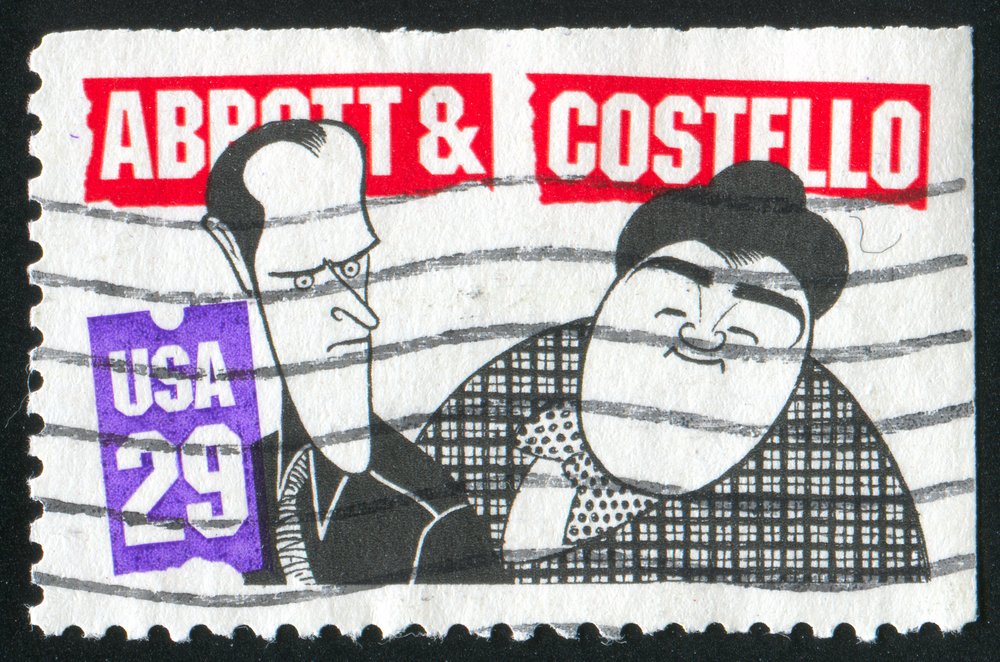 As election year heats up, we keep hearing conflicting reports about the labor market’s gains from the economic recovery. At times, the arguments are reminiscent of the “Who’s on First” routine that Abbot and Costello were so famous for. Here is some of that same logic to help us understand how the number of people without jobs is going up while the unemployment rate is going down.
As election year heats up, we keep hearing conflicting reports about the labor market’s gains from the economic recovery. At times, the arguments are reminiscent of the “Who’s on First” routine that Abbot and Costello were so famous for. Here is some of that same logic to help us understand how the number of people without jobs is going up while the unemployment rate is going down.
COSTELLO: I want to talk about the unemployment rate in America.
ABBOTT: Good Subject. Terrible times. It’s 9%.
COSTELLO: That many people are out of work?
ABBOTT: No, that’s 16%.
COSTELLO: You just said 9%.
ABBOTT: 9% Unemployed.
COSTELLO: Right 9% out of work.
ABBOTT: No, that’s 16%.
COSTELLO: Okay, so it’s 16% unemployed.
ABBOTT: No, that’s 9%…
COSTELLO: Wait a minute. Is it 9% or 16%?
ABBOTT: 9% are unemployed. 16% are out of work.
COSTELLO: If you are out of work, you are unemployed.
ABBOTT: No, you can’t count the “Out of Work” as the unemployed. You
have to look for work to be unemployed.
COSTELLO: BUT THEY ARE OUT OF WORK!
ABBOTT: No, you miss my point.
COSTELLO: What point?
ABBOTT: Someone who doesn’t look for work, can’t be counted with
those who look for work. It wouldn’t be fair.
COSTELLO: To whom?
ABBOTT: The unemployed.
COSTELLO: But they are ALL out of work.
ABBOTT: No, the unemployed are actively looking for work. Those who
are out of work stopped looking. They gave up. And, if you give up,
you are no longer in the ranks of the unemployed.
COSTELLO: So if you’re off the unemployment rolls, that would count
as less unemployment?
ABBOTT: Unemployment would go down. Absolutely!
COSTELLO: The unemployment just goes down because you don’t look for work?
ABBOTT: Absolutely it goes down. That’s how you get to 9%.
Otherwise it would be 16%. You don’t want to read about 16%
unemployment do ya?
COSTELLO: That would be frightening.
ABBOTT: Absolutely.
COSTELLO: Wait, I got a question for you. That means they’re two
ways to bring down the unemployment number?
ABBOTT: Two ways is correct.
COSTELLO: Unemployment can go down if someone gets a job?
ABBOTT: Correct.
COSTELLO: And unemployment can also go down if you stop looking for a job?
ABBOTT: Bingo.
COSTELLO: So there are two ways to bring unemployment down, and the
easier of the two is to just stop looking for work.
ABBOTT: Now you’re thinking like an economist.
COSTELLO: I don’t even know what I just said!
And now you know why unemployment figures are improving!
For a more serious treatment of the issue, watch this 8 minute video by Brian Westbury, chief economist at First Trust.
[youtube=http://www.youtube.com/watch?v=fS_LpEs-4Uo&w=480&h=360]
Brian points out that over the last several decades, the official unemployment rate, (currently 8.3 %) is almost perfectly correlated with the jobless rate (aka The U-6 Index) which is currently 15%. Mathematically, the U-6 index is consistently 1.8 times the official unemployment number, and since that ratio has not changed, the gap between the two is not increasing because more people have simply stopped looking for a job. He does suggest that the gap may widen with the aging of our population as the percentage of people over age 60 who want to remain increases.
While we can debate how to best measure unemployment, a couple of facts are evident:
1. The U.S. added more than 200,000 jobs for the third consecutive month. (WSJ – 3/10/2012)
 2. This job growth was predicted by the Vistage Q4 2011 CEO Confidence Index at the end of last year. Here is a quick summary of those results.
2. This job growth was predicted by the Vistage Q4 2011 CEO Confidence Index at the end of last year. Here is a quick summary of those results.
Vistage members were not only more optimistic about prospects for the national economy, but also about the outlook for their own firm’s performance during the year ahead. The Vistage CEO Confidence Index was 98.8 in the fourth quarter 2011 survey, up from 83.5 in the third quarter and reaching the highest level since the start of 2011 (105.2).
Below are some key highlights from the Q4 Vistage CEO Confidence Index:
- 41% of CEOs recognized improved economic conditions over the previous 12 months, up from just 18% in the Q3 survey.
- Only 12% of CEOs thought the economy had recently worsened.
- 73% of CEOs expected revenue growth.
- 55% of CEOs said they plan to increase the number of their employees over the next 12 months, compared with 46% in the Q3 survey.
- 43% of CEOs said the European debt crisis impacts their business.
- 24% of CEOs are finding it easier to obtain credit for their business today compared to 6 months ago.
- 49% of CEOs believe Mitt Romney will emerge as the Republican Presidential Nominee for 2012, while 29% believe it will be Newt Gingrich.
The Vistage CEO index has become a very reliable and accurate predictor for the economy and job growth 2 quarters out. Having these insights into the future provides a competitive advantage to Vistage member companies, and is one of the many reasons that they consistently outperform their non-member peers.
The Q1 2012 CEO confidence index is currently being compiled, and I will post an update in early April
Read More >>CEOs in my Vistage Peer Group candidly reveal the impact the group has had on their businesses
All Blog Posts, Vistage Peer Groups / 13.02.2012
A little over a year ago, I submitted a post citing research that Vistage CEOs outperformed their non-member peers. (http://theleadershipcatalyst.wordpress.com/2010/10/31/research-backs-claims-that-vistage-ceos-outperform-their-nonmember-peers). The bottom line of that article was that
“… in one of the toughest economies in history, Vistage member companies averaged 5.8 % revenue growth, while nonmembers averaged a (9.2%) revenue decline. In future posts, we will explore the factors that contribute to that sizeable performance difference.”
The purpose of today’s post is to make good on that promise. Most of the CEOs who have been in the Vistage Peer Group that I chair have seen significant improvements in their business since they joined. Our group currently has 18 members from a diverse set of industries and backgrounds and businesses that range in size from $5M to over $800M in annual revenues. To better understand how belonging to Vistage increased their effectiveness and enhanced their lives, I took a little flip camera to one of our monthly executive coaching sessions and asked them. (To see all 12 videos, click on the CEO VIDEOS tab at the top of the page.)
For purposes of this blog post, I selected the responses of 3 CEOs from varying company sizes, industries, and business models. Some were struggling a year ago, and others were doing well. All are doing better now and point to their Vistage membership as a key factor in their successes. Below is a brief outline of their situations and links to their 2 minute YouTube videos where they share how Vistage made a difference.
Gene Earhart is the CEO of Wellington Security Systems, a small family business (< $5M) he owns and operates in partnership with his brother-in-law. Gene is a lifelong entrepreneur, who decided to start this business with his family before finishing college. His company designs, installs, and services electronic security systems for the commercial market, and they have 10 employees in a single location. He credits Vistage with helping him turnaround his company to achieve the most profitable year in their 30-year history.
Click here to see a 2 minute YouTube video of Gene telling his story.
Mike Martin is the CEO and owner of Carlson & Stewart Refrigeration ($10 – $25M), which designs, installs, and services industrial and commercial refrigeration systems. An engineer by training, he has worked most of his career at his company, and bought it and became CEO about 8 years ago. Based in Marshall MN, he has about 50 employees in 3 locations in Minnesota and South Dakota. He says that he would not have been able to double the size of his business last year without Vistage.
See Mike’s 2 minute YouTube video by clicking here.
Jim Fisher is the CEO of Midwest Sign, a privately owned business ($100M+) that distributes sign making equipment and supplies. They have about 200 employees in 9 locations throughout the western half of the U.S.. Jim is trained as an accountant, and has spent most of his Career with Midwest. He was thrust into the CEO position about 5 years ago with the sudden and unexpected death of the beloved company owner and founder. After being pounded by the recession, he and his team have hit the restart button on their growth engine, and last year they achieved double-digit growth and record profitability. He points to Vistage as helping him become more strategic, getting him more on top of the business, and showing him how to get a lot more done in less time.
Click here to see more about how Vistage has helped Jim elevate his game as a CEO.
A key theme that cuts across all of these stories is that “None of us is as smart as all of us”. Having an advisory board of fellow CEOs that have your back and challenge your thinking is a tremendous competitive advantage.
Read More >>How to Increase Accountability
All Blog Posts, Coaching, Performance Management, Vistage Peer Groups / 22.11.20111 comments
In a recent Vistage meeting, a theme that emerged was how to better hold others accountable. People often agree in meetings to things with “their fingers crossed”, and don’t deliver on commitments. While this is the subject of many books and training programs, one quick fix is to assure that you have a “Level 5” agreement.
James Newton, CEO of Newton Learning corporation and longtime Vistage Speaker, outlines 5 levels of agreement. Below is a brief description of each agreement level, illustrated by a simple example of setting up a golf game. As you read the scenarios, consider the level of agreement you have achieved in those instances where people have not delivered on commitments.
Level 1 Agreement: No agreement at all.
Brian: “Hey Mike, what do you say we play golf after our next meeting.”
Mike: “There’s an idea.”
Level 2 Agreement: Likes the idea, but no agreement.
Brian: “Hey Mike, let’s play golf after our next meeting.”
Mike: “Good idea!”
Level 3 Agreement: Reluctant agreement–but no commitment to do anything.
Brian: “Mike, Let’s play golf after our next meeting.”
Mike: “Man, I am really swamped, I better not.”
Brian: “Come on Mike, this will probably be our last chance before snowfall.”
Mike: “OK, I’m in.”
Level 4 Agreement: Enthusiastic agreement–but no commitment to do anything.
Brian: “Mike, let’s play golf after our next meeting”
Mike: “Great idea! Count me in.”
Level 5 Agreement: Specific commitment of who is going to do what by when, stated by the accountable person.
Brian: “Mike, let’s play golf after our next meeting”
Mike: “Great idea!” I’m in.”
Brian: “Where do you want to play.”
Mike: “Let’s play at my club. I’ll make a tee time for after our meeting.”
Brian: “How about if we have our meeting at your club so we can tee off right after that.”
Mike: “Great, I’ll meet you at my club for our monthly one-to-one on Friday at 2:00 pm and make a tee time for 3:30 pm.”
♦♦♦♦♦♦♦♦♦♦♦♦♦♦♦♦♦♦♦♦♦♦♦♦♦♦♦♦♦♦♦♦♦♦♦♦ LEADERSHIP CATALYST TIP ♦♦♦♦♦♦♦♦♦♦♦♦♦♦♦♦♦♦♦♦♦♦♦♦♦♦♦♦♦♦♦♦♦♦♦
Accountability increases with the level of agreement. If you are having trouble holding people accountable, push for a Level 5 Agreement, with a specific commitment to what is going to get done, by whom, and by when that is stated by the accountable person. It may take a little longer, but it will increase accountability and execution–and will save you a lot of time in the long run.
♦♦♦♦♦♦♦♦♦♦♦♦♦♦♦♦♦♦♦♦♦♦♦♦♦♦♦♦♦♦♦♦♦♦♦♦♦♦♦♦♦♦♦♦♦♦♦♦♦♦♦♦♦♦♦♦♦♦♦♦♦♦♦♦♦♦♦♦♦♦♦♦♦♦♦♦♦♦♦♦♦♦♦♦♦♦♦♦♦♦♦♦♦♦♦♦♦♦♦♦
Is your business model dying? How do you know?
All Blog Posts, Business, Strategy, Vistage Peer Groups / 30.10.2011
- Why did XEROX give the mouse and “windows” technology to APPLE?
- Why didn’t AT&T invent SKYPE?
- Why didn’t MICROSOFT invent GOOGLE?
- Why didn’t BLOCKBUSTER invent NETFLIX?
- What changes have you made to your business model in the last couple of years?
- If an employee came to you with a “game changing” idea that might threaten your core business in the short term, would you listen to them?
- Is your business model dying, how do you know?
A Death in Cupertino | The Right Kind of Tyrant
All Blog Posts, Motivation, Vistage Peer Groups / 11.10.2011
“ Remembering that I’ll be dead soon is the most important tool I’ve ever encountered to help me make the big choices in life; because almost everything —all external expectations, all pride, all fear of embarrassment or failure — these things just fall away in the face of death, leaving only what is truly important. Remembering that you are going to die is the best way I know to avoid the trap of thinking you have something to lose.
You are already naked. There is no reason not to follow your heart.”
Steve Jobs
1955-2011
Founder and CEO of Apple
From his Stanford University Commencement Address, 2005
Picking an article to share with you about the passing of Steve Jobs is an impossible task with so many that knew him sharing their impressions on one of the most important entrepreneurs in history.
We have a saying in Vistage: “We invite CEOs to our group but human beings show up.” To get a sense of what was important to this truly remarkable and essestial human being, I’d like to share with you the 15 minute video of his 2005 Stanford Commencement speech. I found it incredibly inspirational, and I hope you will share it with your friends, family and employees.
This inspiring speech, however, should not blind us to the fact that Steve Job’s management style was often very different from the warm, fuzzy and friendly feeling you get from using his products or visiting the Apple store at the mall. For some insights into the management style that made Apple the most valuable company in America, check out this article which suggests that if Steve Jobs was often a hard man to work for, he was, in fact, “The Right Kind of Tyrant.”
Thanks, Steve, for all you have given us. Rest in Peace
Numerous articles have been written about the resignation this past week of Steve Jobs as CEO of Apple (though he remains as chairman). I could list a dozen that I find compelling and you can easily find them online or elsewhere. It would be difficult to find one that does not celebrate his many successes. Fortunately, I found one that focuses on his many failures…and how they were indispensible to his breathtaking successes. Check out “Steve Jobs: America’s Greatest Failure” ; required reading for any entrepreneur….or those who manage one.
Read More >>Why I Admire CEOs of Small, Privately Held Companies
All Blog Posts, Vistage Peer Groups / 04.02.2011
Recently I attended a 30th anniversary celebration honoring 3 colleagues from my former company, PDI Ninth House. Like me, they had spent most of their careers working with Global 1000 firms all over the world. We shared memories of jet setting around the globe, working with top executives at major companies throughout the US, Asia, Europe, and the Middle East.
People were naturally curious about why, with all of my Global 1000 Company experience, I preferred to work with CEOs of small privately held companies. The short answer to that question is that I admire their courage and their total commitment to the success of their business and their people.
Jay Goltz expands upon this point in a New York Times article entitled “There are Two Kinds of CEOs” that appeared February 2, 2011. The article features a conversation between the writer and Rafael Pastor, the chairman and chief executive of Vistage, a leading organization of chief executives. They agreed that one of the biggest differences between CEOs of big public companies and CEOs who run small privately held companies is how connected the CEO is to the success of the business. While CEOs of both types of companies have significant upside consequences, the consequences of a business downturn are far more severe for the small private company CEO.
As Jay Goltz explains:
“When things get tough, instead of getting multimillion-dollar payouts to quit, many small-company C.E.O.’s are compelled to put even more money into the business. Mr. Pastor of Vistage recently polled the organization’s members on this question: “During this economic downturn, did you at any time pledge personal assets or invest personal money into your company to help weather the storm?” Forty-six percent said yes.
To many, betting the house may seem an insane risk to take. And maybe it is. But if small-business owners weren’t willing to take that risk, there would be far fewer small businesses in America. You see, many entrepreneurs are what I would call “all in”: all of their money, most of their time, and most of their ego and self worth and pride are involved. Sometimes they put too much in, at the expense of their families and general well-being.
But the fact is that when small company chief executives fail, they often face dire consequences. And that’s an aspect of business ownership that is rarely noted in the glamorized view of entrepreneurship that we frequently see portrayed. Nor is it fully understood by public officials who always seem eager to have small businesses borrow more aggressively and hire more aggressively.”
Read More >>Jay Cutler of the Chicago Bears created a lot of controversy last week when a knee injury prevented him from finishing the NFC conference championship game against the Green Bay Packers. Many questioned his toughness, and believed he had “quit on his team” during their most important game of the year.
An MRI later showed the injury was indeed serious, and confirmed the decision for him not to play. It did not, however, excuse the lack of leadership and poor attitude he displayed during the remainder of the game. Instead of cheering on his teammates or supporting the backup quarterbacks, cameras repeatedly caught him sulking on the sidelines, listening to his iPod.
The lesson for CEOs is that, like Jay Cutler, we are always “on camera” in our organizations. We need to periodically check ourselves to make sure we haven’t succumbed to bad leadership habits and make sure that we aren’t displaying a poor attitude, which can be contagious for the rest of our organization.
Mike Myatt makes a compelling case that attitude reflects leadership and is a decision.
“Show me a CEO with a bad attitude and I’ll show you a poor leader. While this sounds simple enough at face value, I have consistently found that one of the most often overlooked leadership attributes is that of a positive attitude. As a CEO, how can you expect to inspire, motivate, engender confidence, and to lead with a lousy attitude? The simple answer is that you can’t…it just won’t work. CEOs with bad attitudes will not only fail to engage their workforce, but they will quickly find themselves shown the door as their attitude’s impact on performance becomes visible to the board.”
Do you need an attitude adjustment? Click here for a 5 point checklist to check yourself, and some compelling statistics about why you may want to change.
Read More >>Research backs claims that Vistage CEOs outperform their nonmember peers.
All Blog Posts, Vistage Peer Groups / 31.10.20101 comments
In last week’s post, I featured a CNBC broadcast regarding Vistage Member CEOs forecasting short term growth for small companies over the next two quarters. In that report was a caveat that Vistage CEOs may not be a totally representative sample of Small Business CEOs, because independent research shows that they consistently outperfom peer nonmember companies. I asked Vistage International to share their evidence, and was impressed with the research they produced. As can be seen from the graphs below, a Vistage Sample of 1265 member companies was compared with a statistically matched sample of about a million D & B nonmember companies. Over the period 2006 though 2009, Vistage companies outperformed nonmember companies on CAGR by15 percentage points. Moreover, this trend was consistent across all major business segments, ranging from a 13.2 percentage point difference in the Transportation and Communication Sector, to a 25.7 percentage point difference in the Wholesale Trade sector. In other words, in one of the toughest economies in history, Vistage member companies averaged 5.8 % revenue growth, while nonmembers averaged a (9.2%) revenue decline. In future posts, we will explore the factors that contribute to that sizeable performance difference.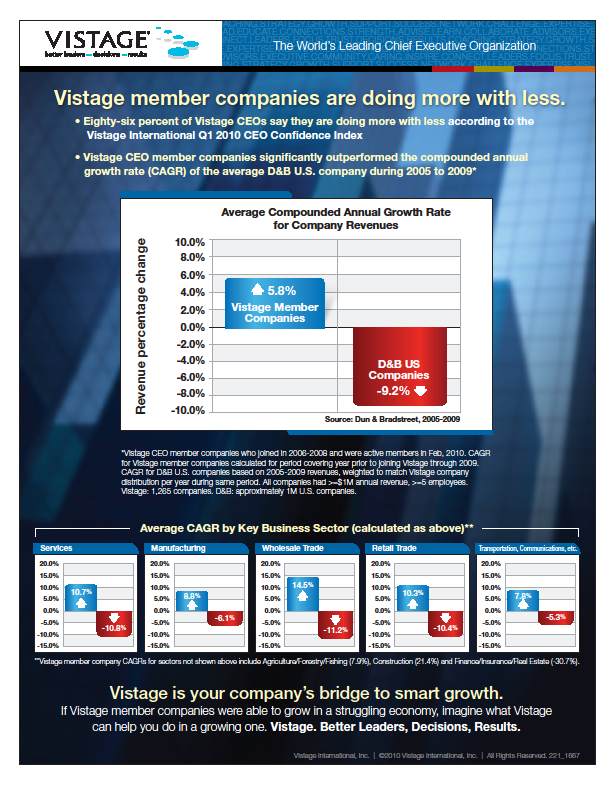
Read More >>
CNBC reports that 67% of Vistage CEOs Predict Revenue Growth for their Companies
All Blog Posts, Vistage Peer Groups / 23.10.2010
Rafael Pastor appeared as a guest on CNBCon Monday afternoon wherein he released a new economic survey of Vistage CEOs outlook on the economy. In this 5 minute CNBC video clip (Please endure the 20 second lead ad), Pastor relates that the Vistage CEOs surveyed (representing over 14,000 member companies worldwide, with 10,000 member companies in the USA) are experiencing a modest lift in this economy, and are forecasting growth two quarters out, and a better economic forecast in 2011 than the market specialists are forecasting. (Note: Vistage CEOs may not be a representative sample of small businesses because independent research shows that Vistage member companies consistently outperform their non-participating peers.) Despite not being a totally representative sample, the Vistage CEO Confidence Index is a reliable leading indicator of GPD growth two quarters out. Pastor goes on to say that Vistage member companies do not forecast significant job growth in 2011. Rather, Vistage CEOs are focused on doing more with less, focusing on international markets, technology productivity enhancements to reduce costs, and operating their companies more profitably with little intention of rehiring many of those that were laid off earlier in the recession.
Other interesting survey highlights include:
- 92% expect health care costs to go up
- 67% say their business will be hurt if the Bush tax cuts are not extended
- 62% expect Republicans to control the November elections
- 52% say they would not start a new business in the current economic climate
CEOs, like HIPPOs, at times need to avoid trampling others.
All Blog Posts, Vistage Peer Groups / 08.08.2010

Walking into my client’s building, I noticed a large crew of maintenance workers feverishly manicuring the company grounds. When I asked the new CEO what had prompted such frenzied activity, he shook his head and said that earlier that morning, he had commented to the receptionist that he was having a hard time keeping up with his lawn, with all of the rain they had been having. His comment had been misunderstood by a bystander as criticism of how the grounds were being maintained, and reinforcements had been dispatched to manage the “grounds keeping crisis”. This was my first introduction to the “HIPPO” effect, which is an acronym for how the Highest Paid Person’s Opinion can ripple through an organization.
The effect is even greater when a CEO has strong views about an issue. For example, Steve Jobs pushed through the introduction of the new iPhone, even though problems about the antenna design had been known for months.
Suzanne Lucas (a.k.a. Evil HR Lady) suggests 5 tips for how employees can avoid being trampled by a HIPPO. I think they are pretty good, and I recommend that CEO’s not only read them, but distribute them and discuss them at a team meeting to assure their opinions are being constructively challenged.
CEOs, like HIPPOs, at times need to avoid trampling others.
Read More >>What can CEOs learn from a twenty-something college dropout?
All Blog Posts, Vistage Peer Groups / 29.07.2010
I often talk to fellow CEOs about their development, and who they would like to have in a CEO peer group with them. Like most of us, they want someone who has already been down the road that they are traveling, and can point out the opportunities and landmines they may encounter on their journey. They typically think of someone who is more experienced (and older) than themselves who can challenge them and hold them accountable.
However, Joe Frontiera wrote an article in this week’s Washington Post entitled “Facebook’s leadership: Dissecting Mark Zuckerberg “ that challenges this notion that lessons must be learned from someone more experienced. In this one page article, he identifies lessons that can be learned from this 26 year old’s brief tenure as the co-founder and CEO of face book. Given Facebook has been estimated to be worth as much as $35B, these are lessons worth heeding. The one page article is worth a 5 minute read to learn more about the lessons highlighted below.
♦♦♦♦♦♦♦♦♦♦♦♦♦♦♦♦♦♦♦♦♦♦♦♦♦♦♦♦♦♦♦♦♦♦♦ LEADERSHIP CATALYST TIPS ♦♦♦♦♦♦♦♦♦♦♦♦♦♦♦♦♦♦♦♦♦♦♦♦♦♦♦♦♦♦♦♦♦♦♦
The key lessons learned in observing a 26 year old, highlighted by Frontiera are:
- “Believe in the vision.”
- “Execution can trump innovation.”
- “Mistakes become mistakes when you let them.”
- “The Devil is in the details.”
- “Ownership matters.”
♦♦♦♦♦♦♦♦♦♦♦♦♦♦♦♦♦♦♦♦♦♦♦♦♦♦♦♦♦♦♦♦♦♦♦♦♦♦♦♦♦♦♦♦♦♦♦♦♦♦♦♦♦♦♦♦♦♦♦♦♦♦♦♦♦♦♦♦♦♦♦♦♦♦♦♦♦♦♦♦♦♦♦♦♦♦♦♦♦♦♦♦♦♦♦♦♦♦
Read More >>“Immeasurement”: The Third sign of a Miserable Career Transition
All Blog Posts, Change, Motivation / 29.05.2010
This is the final post in a three part series summarizing a presentation I recently gave to the CPI Executive Forum on how to keep yourself motivated, engaged and positive as your job search extends from weeks, to several months, to over a year. I have been applying Lencioni’s “Three signs of a Miserable Job” paradigm to career transition, because people often describe transition as one of the most miserable jobs they have ever had.

Avoid being miserable like Toby durring your career transition!
Having covered how to avoid “Anonymity” and “Irrelevance” in my previous two posts, I will now focus on “Immeasurement”, a term Lencioni coined for jobs in which:
- Clear means of assessing progress are lacking
- Measures are outside of your control
- Measures don’t tie directly to purpose
One key to avoiding “immeasurement” in a career transition is effective individual time management. Unfortunately, for many executives, this skill has atrophied with the reliance on executive assistants to schedule their time and when Franklin Planners were replaced by Microsoft Outlook. They need to get back to having their daily activities and calendar being driven by their meaningful objectives and placing a weekly planning and review session on their calendars to “count” their successes and plan their next week’s priorities. Otherwise, it is far too easy to drift and waste time on low yield activities.
 “Take Back Your Life!” by Sally McGhee and John Wittry is a great book that shows how to implement David Allen’s “Getting Things Done” approach to time management using Microsoft Outlook. The authors walk you step by step on how to configure MS Outlook into a single dashboard that organizes your tasks, your calendar, and your files around your objectives, and provides a control panel on one screen that enables you to track your progress. One of the tips I find particularly helpful is the use of categories by which you can color- code tasks and appointments according to objectives. (For example, use green for networking meetings, teal for networking calls, blue for interviews, and red for on-line marketing activities.) In addition to meetings, also schedule time blocks for completing specific tasks on your calendar. (E.g. Outbound calls and emails to set up networking meetings, LinkedIn search engine optimization (SEO), Internet research , blog posts and tweets.) By scheduling and color-coding all of your tasks as well as your meetings on your calendar, you provide a graphic visual on how you have spent your time this week and what you have planned for next week. If you see too much white space next week or not enough networking time (green), start making some calls!
“Take Back Your Life!” by Sally McGhee and John Wittry is a great book that shows how to implement David Allen’s “Getting Things Done” approach to time management using Microsoft Outlook. The authors walk you step by step on how to configure MS Outlook into a single dashboard that organizes your tasks, your calendar, and your files around your objectives, and provides a control panel on one screen that enables you to track your progress. One of the tips I find particularly helpful is the use of categories by which you can color- code tasks and appointments according to objectives. (For example, use green for networking meetings, teal for networking calls, blue for interviews, and red for on-line marketing activities.) In addition to meetings, also schedule time blocks for completing specific tasks on your calendar. (E.g. Outbound calls and emails to set up networking meetings, LinkedIn search engine optimization (SEO), Internet research , blog posts and tweets.) By scheduling and color-coding all of your tasks as well as your meetings on your calendar, you provide a graphic visual on how you have spent your time this week and what you have planned for next week. If you see too much white space next week or not enough networking time (green), start making some calls!
The second key to avoiding immeasurability in your career transition is knowing what to count and setting daily and weekly goals for those metrics. You are much more likely to feel a sense of accomplishment at the end of the day if you achieve daily goals you can control, rather than simply chaining yourself to your desk all day to “work on your job search”. (E.g. set up 3 networking meetings for next week, submit resume with strong cover memo to job posting, connect with hiring manager through LinkedIn connections, complete talking points for next week’s interview, obtain 3 additional contacts and 2 introductions from this afternoon’s meeting, register for next month’s networking event, schedule self for 2 hour shift at Feed My Starving Children.) Set reasonable goals, but don’t stop until you achieve them. If you need to make 5 more phone calls to set up one more meeting, do it. If you have to work after dinner to finish your blog post, do so. You will find that you will be working harder and enjoying it more! Make sure to include personal goals regarding family, fitness, fulfillment and fun to avoid burnout.
Finally, put a recurring weekly planning and review session on your calendar to celebrate your successes, evaluate your progress and time allocation, and plan next week’s priorities. If you find it difficult to hold yourself accountable, schedule it with a friend in transition, and hold each other accountable.
♦♦♦♦♦♦♦♦♦♦♦♦♦♦♦♦♦♦♦♦♦♦♦♦♦♦♦♦♦♦♦♦♦♦♦ LEADERSHIP CATALYST TIPS ♦♦♦♦♦♦♦♦♦♦♦♦♦♦♦♦♦♦♦♦♦♦♦♦♦♦♦♦♦♦♦♦♦♦♦
To avoid “immeasurement” during your career transition, assess your progress weekly (if not daily) with relevant measures that are under your control.
- Use Sally McGhee’s approach to configure MS Outlook to align and manage your time and tasks against your career transition meaningful objectives.
- Manage by results, setting and achieving reasonable daily and weekly quantifiable objectives.
- Set a recurring weekly appointment with yourself or a partner to review your progress, time allocation against priorities, plans for next week and hold yourself accountable.
- Ultimately, avoiding a miserable career transition is about learning to count—Why you count and add value as a person, how what you do counts, and what to count on a daily basis.
♦♦♦♦♦♦♦♦♦♦♦♦♦♦♦♦♦♦♦♦♦♦♦♦♦♦♦♦♦♦♦♦♦♦♦♦♦♦♦♦♦♦♦♦♦♦♦♦♦♦♦♦♦♦♦♦♦♦♦♦♦♦♦♦♦♦♦♦♦♦♦♦♦♦♦♦♦♦♦♦♦♦♦♦♦♦♦♦♦♦♦♦♦♦♦♦♦♦
Read More >>Irrelevance: The Second Sign of a Miserable Career Transition
All Blog Posts, Change, Motivation / 20.05.2010
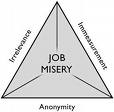 In my May 13th post, I talked about how Lencioni’s three signs of a miserable Job are often present during career transition, and addressed how to avoid his first sign: anonymity. Today I am focusing on how to avoid the second sign–irrelevance. Before doing so, however, I want to broaden the context of career transition to include not only job search, but also transitions such as retirement, staying home to raise a family or be a caregiver, or even making a transition from college to your first professional job. All of these transitions require a recalibration of why you count, how you count, and what you count. For simplicity, in this post I’ll continue to illustrate my points with job transition examples.
In my May 13th post, I talked about how Lencioni’s three signs of a miserable Job are often present during career transition, and addressed how to avoid his first sign: anonymity. Today I am focusing on how to avoid the second sign–irrelevance. Before doing so, however, I want to broaden the context of career transition to include not only job search, but also transitions such as retirement, staying home to raise a family or be a caregiver, or even making a transition from college to your first professional job. All of these transitions require a recalibration of why you count, how you count, and what you count. For simplicity, in this post I’ll continue to illustrate my points with job transition examples.
Irrelevance occurs when you have trouble seeing how what you are doing really makes a difference. For example, after months of networking with no job offers, it is easy to become discouraged and question whether you are just wasting your time. As my friend Kari once quipped, “at the end of the day, how do you know if it was a good day, or just a waste of make-up?”

The key to avoiding irrelevance is to break your goal of finding a job down into a handful of meaningful objectives, driven by supporting projects, which in turn, help you prioritize and balance your daily activities. If you don’t, you run the risk of getting lost in an endless sea of tasks–networking, searching the internet, completing on-line applications, perfecting your resume, and trying to develop an online presence through LinkedIn, twitter, or blogging. All of these things are important, but without seeing a direct connection between your daily activities and your intermediate objectives and your ultimate goal, it is easy to become disengaged, and well, miserable.
♦♦♦♦♦♦♦♦♦♦♦♦♦♦♦♦♦♦♦♦♦♦♦♦♦♦♦♦♦♦♦♦♦♦♦ LEADERSHIP CATALYST TIPS ♦♦♦♦♦♦♦♦♦♦♦♦♦♦♦♦♦♦♦♦♦♦♦♦♦♦♦♦♦♦♦♦♦♦♦
To avoid irrelevance during your career transition:
- In addition to career transition goals, set meaningful personal goals in areas such as: Family/friends, finances, fitness, fulfillment and fun. Setting and achieving measurable goals in each of these areas enables you to maintain balance and a positive attitude, which is critical to a successful job search. For example:
- Fulfillment: Give back. Engage in 2 community activities per month that help you feel productive, engaged, and self-confident. Each of these components can be missing when going through career transition, so creating opportunities to fill that gap will help you achieve greater success in the job search process.
- Set an overarching career transition goal with several quantifiable supporting objectives. For example, “Generate a cumulative 3 year income of $300,000, doing what I love and providing enough flexibility to achieve my personal goals.” Examples of supporting objectives for this goal include:
- Generate at least 2 interesting job offers by 12/31.
- Discover 5 relevant openings within 1 week of their initial posting by 12/31
- Schedule 12 face to face meetings per month with target companies through personal networking by 12/31.
- Attend at least 4 networking events per month.
- Generate 4 job leads per month through my on-line presence on LinkedIn, a blog, and twitter. Possible supporting projects might be:
- Optimize LinkedIn so I am among the top 3 people identified when searching on key words by which I want to be found and so I appear in 50 searches a day.
- Blog at least weekly and increase the number of views to 25 a day.
- Use this hierarchy to drive your weekly calendar and significant next actions, and you will be able to measure your progress on a weekly basis, and avoid “immeasurability”, the third sign of a miserable career transition, and the subject of my next blog post.
♦♦♦♦♦♦♦♦♦♦♦♦♦♦♦♦♦♦♦♦♦♦♦♦♦♦♦♦♦♦♦♦♦♦♦♦♦♦♦♦♦♦♦♦♦♦♦♦♦♦♦♦♦♦♦♦♦♦♦♦♦♦♦♦♦♦♦♦♦♦♦♦♦♦♦♦♦♦♦♦♦♦♦♦♦♦♦♦♦♦♦♦♦♦♦♦♦♦
Read More >>





